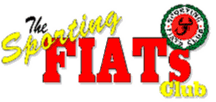Introducing
the 131 Abarth
To begin with the 131 did not look a very likely candidate as a World
beater. When launched the road version didn't even have a Twin Cam engine
option. And yet the 131 was to become the dominant rally car at the
end of the seventies. It all started with a debate within Fiat..........
Out of the
confusions of the mid seventies oil crisis, came two strands of thinking
at Fiat. They still had a newly formed rally team and a recently acquired
world class Abarth organisation. While in the real world potential car
buyers were still reeling from the economic impacts and high petrol
prices as aftershocks of the Middle East War.
The conservative
strand of Fiat thinking can be seen in the 131 Mirafiori range (announced
in September ’74 as a direct replacement for the 124 saloon).
The 124 Sport Twin Cam engines had gone. The 131 was a traditional saloon
with a 1297cc (65bhp) or 1585cc (75bhp) push rod engine and a four speed
box........
On the other side stood Abarth with a competition
budget and Fiat backing to further exploit the growth in motorsport
- rallying in particular. Some of Fiat's marketing managers could see
the impact of the Lancia Stratos, and wanted to use Abarth to provide
Fiat with similar world attention. So the history of rallying Fiats,
and Abarth, and Lancia with its Bertone designed Stratos war machine
become very intermixed.
Its really
only in the final chapters that the 131 appears. To begin with Abarth's
brief was to find a replacement rally car to the 124 Abarth - and it
had to be as quick as a Stratos!
Several prototypes
were developed – including the Prototipo X1/9, and 128 as well
as the 131. For some time, it looked as though the Prototipo X1/9 would
be the next car to carry the fight to world rallying. But in the end
the 131 was chosen.
The 131 is
an even more glorious choice given the capability of the Stratos to
trounce most of the rally competition of the time. By 1976 the Stratos
had completed its third consecutive WRC championship win. Here’s
a purpose built, only just a 2 seater, wedge shaped, V6 Ferrari mid-engined
monster. And its replacement is…. a 131. The contrast in looks
could hardly be greater. Anyway Fiat were about to go ‘toe to
toe’ with Ford for the rally crown and, in Europe at least, we
were trying to forget about the oil crisis and get back to burning some
more hydrocarbons in pursuit of power… we needed some serious
‘wheels’ to do it! So Fiat wanted a car that the average
buyer might identify with. In this sense having a purpose built dream
car in the Stratos, and a ‘street’ credible 131 together
makes a lot of sense. Enter Abarth.
131
Abarth History
Many of the lessons learned by Abarth during the previous years of 124
Abarth Rally development were applied to the 131. In particular the
rear suspension design is very similar, and the unreliable race inspired
16valve head from 1972 had evolved into a very reliable addition to
the 1995cc engine, complete with Kugelfischer mechanical fuel injection.
Abarth had been using the 131 (and a little later the Ritmo 1500s) as
development test beds for their various programmes. There are a range
of 131 prototypes all usually bracketed under the 131 Abarth 035 in
the books about this period… but actually a lot more prototypes
were involved – including rally versions that had a few domestic
rally outings. So we start with another Lancia - the Beta Montecarlo,
only in 1972 it had not been decided which engine this should have.
And Abarth took Fiat's V6 as the basis for testing. From late in 1973
Abarth had the first prototypes bodies of the 131 available. The 131
is a natural choice for motorsport testing - it has a big engine bay,
rear wheel drive and enough room within each of its compartments to
work easily, without being too wide or heavy. It was the last rear wheel
drive saloon that Fiat produced in Italy.
For the next
two and a half years 131s featured in Abarth's testing, in fact throughout
the development of the X1/9 Prototipos. These were the first intended
rally car replacement for the 124 Abarths. Only in 1975 does the 131
become the rally weapon of choice within Fiat. Bertone was tasked with
assembling the 400 required to qualify (homologate) the 131 into the
rally championship. 40 of these were taken in batches for Works preparation
by Abarth. Later in the programme a further ten were used. The intention
was to have the 131 ready for the first rally of the 1976 season.
Its final season
was in 1981. Just before the arrival of the Lancia 037 Abarth in 1982.
131
Abarth Prototypes
The Abarth 030 was based on
the Pininfarina X1/20 (later Lancia Beta Montecarlo/ Scorpion) and fitted
with a modified version of the Fiat 130 Coupe V6 engine. It was at the
moment when it looked as though Fiat might continue with their V6, and
the Montecarlo might well have had one installed in the production cars.
But the oil crisis of 1973 quashed that plan. In the 030, the V6 was
bored out to give 3.5 litres, and was used as a development test bed
by Abarth for the next two years.
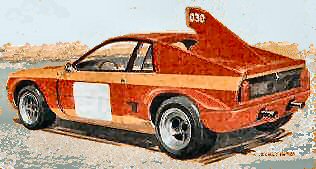
In 1974 Abarth
had completed the first X1/9 prototypes using a bored
out and 'stroked' engine to give an 1839cc Prototipo
X1/9. Initially fitted with an 8 valve head, Abarth had plans
to test a 16 valve head as soon as possible. Problems, however,
in extracting reliable low rev - high torque output from the heads meant
chamber/ valve re-design caused delays. But a satisfactory solution
was achieved a year later.
Their target
was an international rally performance level to beat the Lancia Stratos.
For a more detailed explanation of the X1/9 Prototipo
see http://www.sfconline.org.uk/models/x1-9%20prototipo/x1-9prototipo.asp
. Fiat's decision to use the commercially more acceptable 131 as a basis
for their next rally weapon then meant the 16 valve head research was
applied to the 131 Abarth's 2 litre twin cam instead.
The 131 SE031 Abarth here
(below) in action during the 1975 Giro d’Italia (Tour of Italy)
had a V6 engine derived from the Fiat 130 Coupe. The Giro d’Italia
was a magnificent event open to race rally and fast road cars alike
– using race circuits and stages all around Italy. In 1975 this
031 won the saloon category of the event with Giorgio Pianta the Abarth
test driver at the wheel (later also manager of the Abarth and then
Lancia World Rally team efforts).
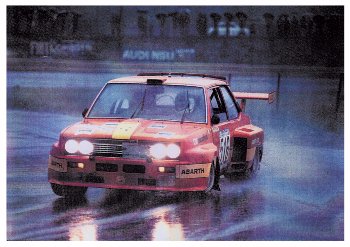
The 131 body
was a good choice for development, with a wide enough engine bay and
rear wheel drive. The car's massive tyres were very necessary! Earlier
in the 1975 season Pianta had tested the car commenting on the car's
lack of stability at high speed. The Fiat V6, derived from their exploits
with Ferrari and the Dinos, was designed as a cruiser rather than a
motorsport engine and although providing plenty of mid-range torque
has been commented on by other drivers as lacking a top end. In the
031 the engine was fitted with triple IDF Webers.
.
The combination
of Mr. Pianta, 031 and Fiat's resources ensured a comfortable saloon
class win - despite several reported suspension, oil and fuel consumption,
and gearbox problems.
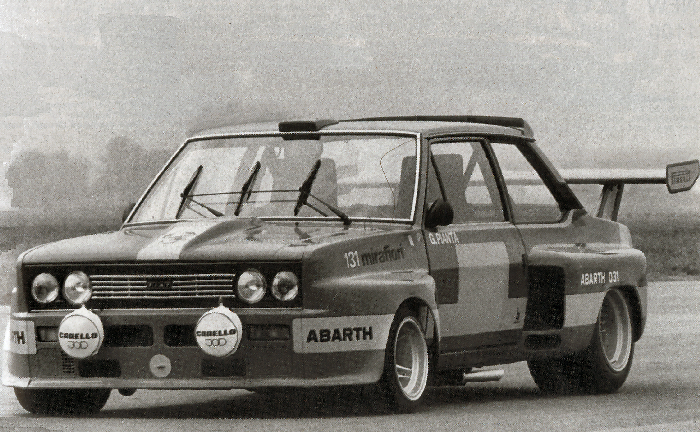
The SE031 was
built as Fiat stepped up their budgets for the rally teams in 1974-75.
Its engine was based around the type 130 B.000 in the Fiat 130 Coupe
(produced between 1971 and 1977). In standard trim this was a V6 (60
degree) with bore and stroke of 102 x 66mm and 3235cc capacity, generating
165bhp DIN at 5,600rpm. Its fuel consumption was just over 19mpg. Which
just about left it doomed following the oil crisis of 1973/4.
For
the SE031 the blocks were bored out to give 3.5 litres with a special
triple IDF Weber inlet manifold, and racing exhaust manifold (as seen
in the picture) with a short 3 into 1 exhaust on either side. This engine
generated 270bhp at 6800rpm.
....With its
rasping V6 exhausts, it was a very noisy car!
The next 131
prototype - the 131 035 Abarth
was fitted with an early Volumex supercharger based on a 16valve 1995cc
Twin Cam. The capacity of the engine was also varied according to the
regulations for its intended class. In the first instance the car was
tested with a 1995cc capacity engine, but to keep within the 'under
2 litre' motorsport categories, forced induction engines carried a capacity
penalty - so the capacity most often quoted for the 035 is 1452cc. This
car also sported streamlined lightweight panels, and the car produced
290bhp with a top speed of 175mph. Made in 1979, it was entered for
practice in the 1980 Le Mans 24 Hours race – driven by Pianta,
but was not entered for the race itself. This was not as odd as may
first appear, as it was relatively easy for Abarth to take the car,
amongst the Lancia transporters and the Beta Montecarlos entered for
the event for additional testing with the team already on hand.
The 035 also
stands astride two eras in Abarth history. It was clear to the designers
that the next generation of world rally winners would need a 50%
power increase from the same capacity engines - as it looked very likely
that the performance loop-hole of using the old Group 4 rally/sports
prototype category would continue in some form. This inevitably would
mean using forced induction.
Within the
Fiat Group there was a debate about the means to achieve this. But as
so often within the Group there was a political as well as engineering
dimension to all of it.
Following the
Stratos years, Lancia had been excluded from competing in the world
rally series while the Fiat 131 Abarth was 'in play'. Instead Lancia
chose to build its brand by entering the Sports and Endurance world
race series. In going head to head with the likes of Porsche, some of
these Lancia sports-racers used naturally aspirated engines, while some
successfully adopted smaller capacity engines with turbochargers. Furthermore,
in 1981, Lancia's motorsport team found a sponsor in Martini who's distinctive
livery and commitment was to last over a decade.
So the debate
over performance and reliability for the next world rally winner was
between Abarth and their Volumex supercharger design, and Lancia with
a form of the KKK type turbocharger familiar to their race team. Some
technical doubts over the durability of the turbo and engine management
coupled with a bigger Works design of Volumex supercharger meant Abarth
won the design debate. However it was to be installed in the Lancia
037 in 1981/2 - also the Abarth SE037.
For more detailed discussions of the 037 see the Lancia
037 Model page. Abarth pulled together all their experience from
the X1/9 prototipos, with a similar mid engined rally car design, to
ensure the 037 was readied in record time. The two cars, the Fiat 131
035 Abarth, and the Lancia 037 Abarth represent the link between the
normally aspirated Fiat twin cam and the Group B Lancia turbocharged
4 wheel drive eras. It was also the last two wheel drive World Rally
Champion rally car.
035
ABARTH VOLUMETRICO COMPETIZIONE
Engine Twin cam belt driven
4 cylinder in line, 1452cc*, 7,8:1 compression
82mm bore x 67,5mm* stroke [*capacity
was varied during its life]
16 valve dohc head 8 valves per cam
Output 290bhp DIN @ 6400rpm
Fuel Injection with Volumex charge compressor
Lubrication:
rotary pump dry sump cap. 5.1kg radiator cooled
Coolant: pump, thermostat & electric booster fan cap 7.5li
Ignition Coil and distributor electronic trigger
Fuel Tank capacity 13 gals
Gear box: 5 speed top speed 174mph
Suspension Front: McPherson strut type, coil springs, with lower wishbones,
longitudinal tie rods
Rear: independent wishbones with trans
Brakes Front: disc,
Rear: disc,
Steering Rack and Pinion
Wheels/tyres Front:16ins 255(10-50)/50 Rear: 16ins 295(13-60)/50 Pirelli
on special Abarth spilt rims
Body
Length
4268mm
Width 1900mm
Height 1350mm
Wheelbase
2490mm
Track Front:1500mm Rear:1560mm
Weight 1020kg unladen
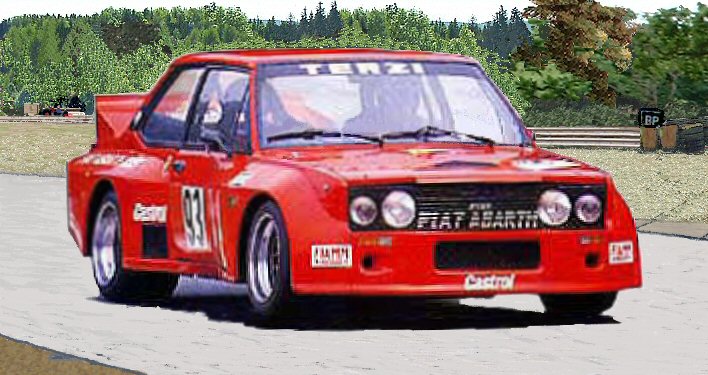
131
Abarth - the Cars
So when the call came from Fiat to prepare the 131 for World Rally winning,
Abarth already knew a lot about the chassis, the car and its components.
They were well down the road to achieve an outright winner. The body
work for the 131 Abarth was designed by Bertone, using similar weight
saving techniques they had practiced with Abarth on the X1/9 Prototipo.
Thin GRP-fibre glass panels were used extensively, with perspex side
and rear windows. The roll cage was kept to a minimal design, commensurate
with its stiffening task. And these first attempts to reduce the car's
weight achieved a tarmac event weight of 973kg. This is over 65kg lighter
than the standard 131 Sport, but with the extra guards and heavier duty
suspension mounts/equipment on gravel rallies, this weight goes up to
1028kg.
A comparison
with the Stratos power to weight figures is revealing, showing that
in this important area, the 131 was in fact inferior to its 1973 sister
car.
In the early
cars, the spring rates were in fact the same for both tarmac and gravel
versions, it was the length of travel that differed according to the
event. 7inch wide wheels were used on gravel rallies, except for the
6inch used on ice, and a variety of sizes used on the tarmac rallies,
exploiting the split rim design to provide a range of widths up to 12
inches. Typically, for tarmac stages, the Works cars would run 10inch
fronts and 11inch rears, depending upon the driver's preferences.
The brakes
were based around 12inch front and 10inch rear rotors, with twin rear
calipers - the car having an additional hydraulic handbrake set. The
gear box was a crash design (reduces the power loss in this era) with
two sets of ratios homologated. Both were close ratio specs. There were
also eight final drive options available, ranging between 6.6:1 and
3.9:1, also ZF supplied a limited slip differential.
The Kugelfischer
mechanically injected 1995cc engine produced between 205bhp and 210bhp
at about 8000rpm - depending on the exhaust manifold and cams chosen.
With a compression ratio of 8:1 Abarth recommended a rev limit of 8500rpm!
Homologation
into Group 4 of the Rally Championship required 400 road versions of
the 131 Rally to be made. Lightweight body panels had been designed
by Bertone who were given the assembly task too. In rally form the shell
was some 50kg to 75kg lighter than standard – depending on the
spec. for the particular rally. Abarth used the stiffer 2 door saloon.
And in March 1976, all the preparations were complete.
The homologation (or Stradale) road version had the following general
specification:
131 ABARTH Spec (homologation
road spec)
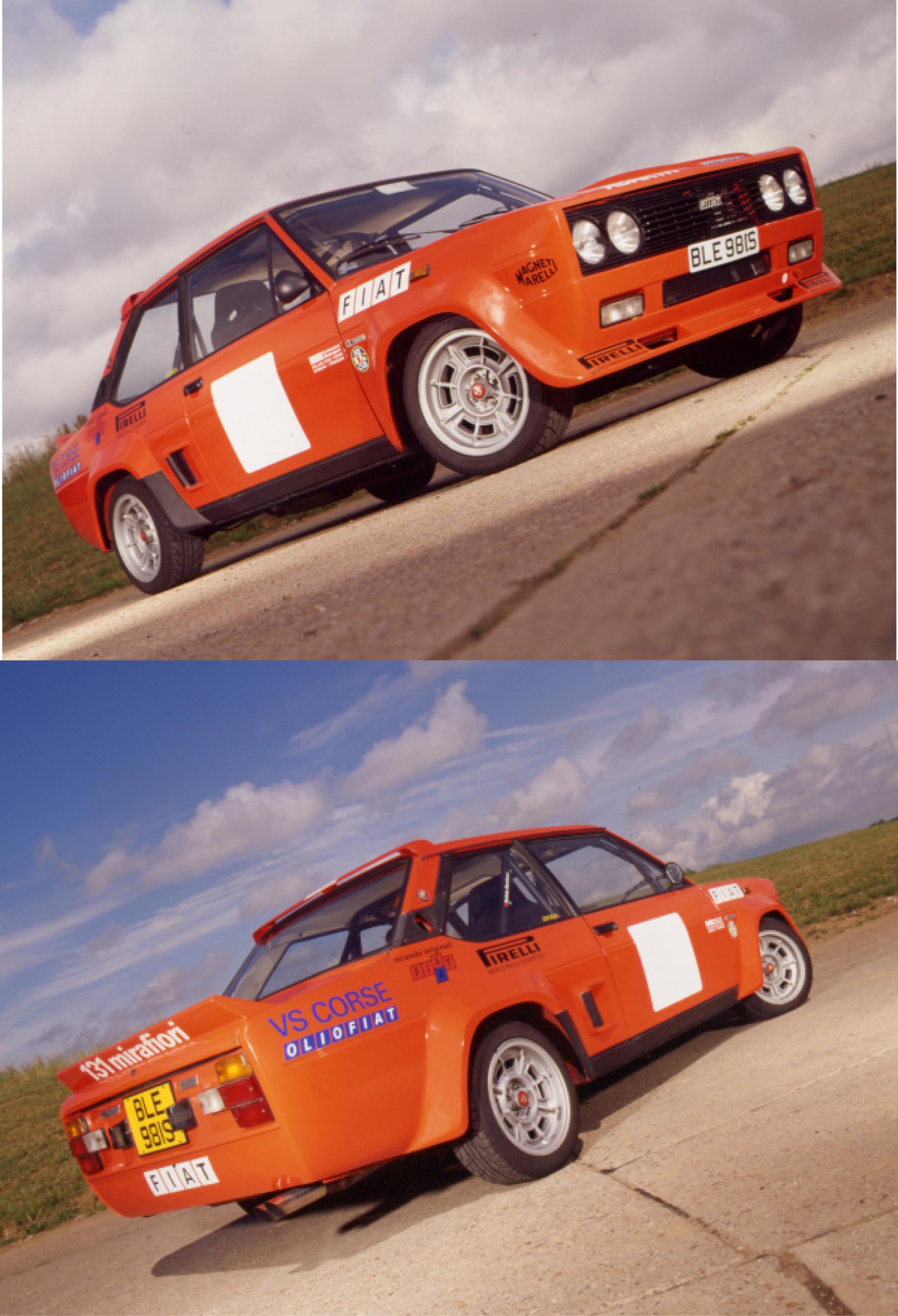
Engine 138 AR1.000 Twin cam belt driven
4 cylinder in line, 1995cc, 10:1 compression
84mm bore x 90mm stroke
16 valve dohc head 8 valves per cam
Output 140bhp DIN @ 6400rpm 18 mkg @3800
Lubrication: rotary pump sump cap. 4.1kg radiator cooled
Coolant: pump, thermostat & electric booster fan cap 7.5li
Carburation Weber 34 DMTR 51/250
Ignition Coil and distributor electronic trigger
Fuel Tank capacity 11 gals, d.c. pump
Gearbox 5 speed Colotti cogs Fiat assembly, clutch: single dry plate
Final Drive Cylindrical screw, 14/50 ratio
Suspension Front: McPherson strut type, coil springs, with lower wishbones,
longitudinal tie rods
Rear: independent wishbones with transverse leaf spring & telescopic
shock absorbers
Brakes Front: disc, single piston & swing arm caliper
Rear: drum
Steering Rack and Pinion
Weight 980kg unladen
Wheels/tyres 14ins 185/60 HR Pirelli
Cromadora 7J
So the road going version of the 131 Abarth included
a 1995cc twin cam, with a 16valve head, but with only one twin choke
Weber carb. This generated about 140bhp @ 6400 rpm with a maximum of
130 lb/ft of torque at 3800 rpm. A 5 speed box was used, and Abarth
homologated * rear axle ratios between 7/43 and 11/40 for competition.
Power output from the Works Rally 131 was 215bhp @ 7000 rpm, with 166lb/ft
of torque at 3800. As mentioned the Works cars also had a fully independent
rear suspension, Kugelfischer mechanical injection, and a 5 speed ZF
gearbox. This car won 3 of the next 4 World Championships in 1977, 78
and 1980.
131 Abarth
Rally Spec (basic competition spec in 1977 season)
Engine 138 AR 000 Twin cam belt driven, Abarth type
236b
4 cylinder in line, 1995cc, 10.7:1 compression
84mm bore x 90mm stroke
16 valve dohc head, 8 valves per cam
Output 215bhp DIN @ 7000rpm 23 mkg @5600, max revs 8600
Lubrication: rotary pump sump cap. 6.6kg radiator cooled
Coolant: pump, thermostat & electric booster fan cap 7.5li
Carburation KugelFischer injection (mechanical trigger)
Ignition Electronic
Fuel Tank capacity 60 litres 13.2 gals, ext. safety cell, D.C. pump
Gearbox 5 speed ZF dog, clutch: single dry plate
Final Drive Hypoid, 8 ratios ranging from about 7/43 to 11/40
Suspension Front: McPherson strut type, independent wishbones, torque
reaction bars coil springs, with lower wishbones, longitudinal tie rods
Rear: fully independent trailing & lateral arms, swinging half shafts
& coil springs with telescopic shock absorbers
Brakes Front: 12ins disc, inc. ventilated, dual piston caliper
Rear: 10 ins disc with dual circuit system with balance pump front/rear
Weight 973kg tarmac configuration, 1028kg gravel unladen
Wheel/tyres 15ins with ranges of tyres inc. MS 35 185/70 15 or P7 285/35
VR 15
Cromadora 7J gravel, 10J front 11J rear tarmac
Body widths 1820mm – 1520mm front track, 1492mm rear track.
Early
version engine notes
Compression
ratio 10,7 to 1
Bosh
- Kugelfischer mechanical fuel injection, first version had DCOE type
throttle bodies and manifold.
Larger
oil pan - 6,6 litres capacity
215
bhp DIN (158 kW) at 7000 rpm, 23kgDIN (225 Nm) torque at 5600rpm
Oil
cooler co-located beside radiator
Flywheel
options 7,3kg with 230mm clutch
Nitrited
crank Mechanical clutch
Abarth
84 mm pistons (part EM 939)
Abarth
valve springs (part 06,131,83)
Abarth
oil filter (part 90,131,00)
Cylinder
head gasket 86,5 mm (part EM 876)
Intake
valve 35,5mm (part EM 937)
Exhaust
valve 30mm (part EM 938)
Engine
gasket set (part EM 952)
Electrical
Notes (Magneti Marelli)
Battery
was 12V-24Ah-150A (Part 6.FC.17)
Windscreen
wiper motor (80 al m/´) (Part. 5040704.1)
Starter
was 12V-1,2kW (Part 5023181.1)
Coil
"Super Bobina" with resistor to 8000rpm (Part BZR.204.A)
Distributor
Abarth spec. (Part S.144.PA)
Alternator,
six diode 12V-1000W (Part 63303425)
Voltage
regulator (electronic) (Part RTT.110.B)
Abarth
spark plugs (Part 7024041)
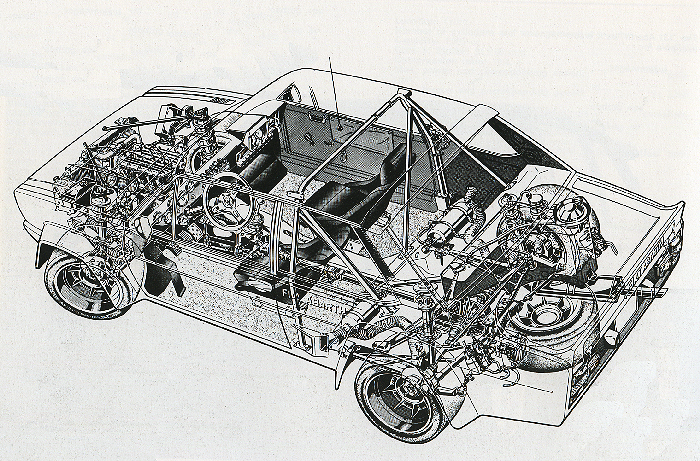
More
Notes:
Weight
distribution was about 50%:50% (front to rear) with crew on board.
wheelbase
2489 mm
track,
front 1461 mm
track,
rear 1397 mm
length
4181 mm
width
1720 mm
height
1372 mm
ground
clearance in gravel trim 216 mm
fuel
capacity, "abarth" tank 59 litres
Abarth
built three different body strengths for tarmac, forest/gravel strength,
and rough (Safari etc).
The
weights vary accordingly; Early gravel models weighted 980 kg, late
gravel models 1026 kg.
The
heavy re inforced ones continued to get heavier each season.
The
line drawing above shows the early style car layout - with the roll
hoop behind the crew, and re inforcing the rear axle points only.
| 131
Works Performance Levels |
| With
the later 230 hp engine and 4,88:1 final drive |
| 0-30
mph |
2,6 seconds |
| 0-60
mph |
6,6
seconds |
| 0-100
mph |
17,5
seconds |
| Top
Speed |
115mph
@ 8000 rpm |
| Standing
1/4mile |
14.6
seconds |
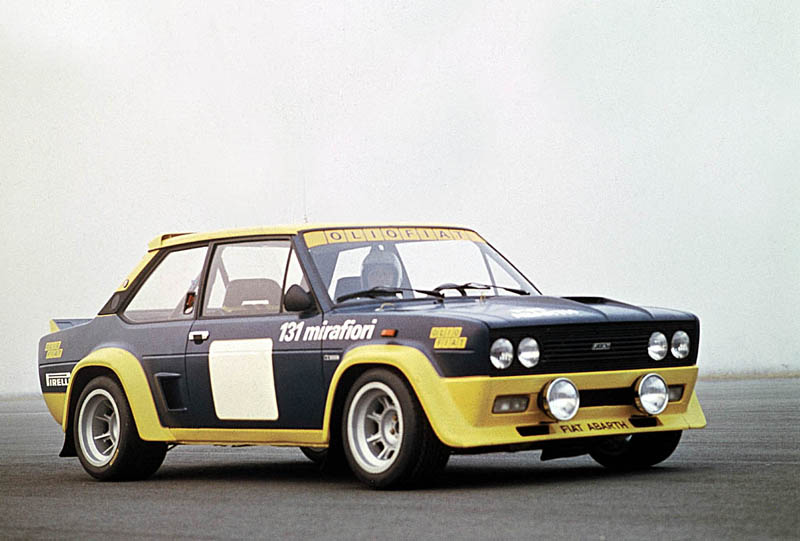
131
Abarth Timeline
By October
1975 Bertone had mostly completed the preparation of the 400 131 Abarth
needed for FIA Homologation into the Group 4 category of the world rally
championship. 50 of these cars were earmarked and duly dispatched to
Abarth for Works preparation (Preparazione Corsa). The aim was to achieve
a fully rally competitive car later during the 1976 season.
The Works cars
were developed in three states of trim/tune to meet the demands of the
world's rallies, Snow and ice, Gravel and Tarmac. Although we might
argue that the Safari Rally spec became a fourth special trim state
later. They were not precise about the detailed spec of some of the
cars - so you can find small variances in the specs on some of the photos
of the time.
The homologation
changes gave Abarth some flexibility in the car specs they used, so
that aluminum paneled doors, perspex side windows, additional lighting
configurations with big or small spot lights can be seen. The size and
finish of the can also be from another spec, and out of place to the
purist. So the wide wheeled tarmac cars extended arches can be seen
on other than tarmac events.
I will continue
to build on this timeline of modifications to the cars, when possible
I have used the homologation dates - when unknown, I have used the time
they first appeared in the rally cars......
Date |
|
Transmission |
|
Electrics |
|
Early76 |
232 C engine |
Colotti T209 with mods |
F:300mm
rotor, 2x48mm pistons.
R:252mm
rotor,
2x38mm
pistons,
Hbrake
drum inside |
10k
rpm rev counter, oil temp/ press, water temp, amps, fuel press/
level
Heuer
twin watches & trip
Halda
odometer trip |
Steering
fast lock 2.8 turns
Early
roll bar behind crew (see image)
Manual
trip extinguisher system |
Mid/ late
76 |
4-2-1 exhaust manifold retained
but exhaust modified throughout the seasons so split again into
two rear boxes optional, and pipe re-join point varied |
Colotti
plus T247 gears.
CIMA casings and then
gears adopted |
New
Pedal box/ master arrangement in bay
Lockheed
4 pot 38mm pitons F&R
Girling
4 pot 38mm
Hbrake
on own disc with 31mm pot |
|
Revised
gear box housing for longer through gear stick
Matching
transmission cover
Roof
air intake filter
Sump
guard access holes
Firewall
modded |
10/76 |
|
Type 163 CIMA box |
F:
Revised bearing housing & bottom joint
Revise
top & bottom mounts with uniball bearings (all 4 corners)
Suspension
arms increased |
|
Steering
arms & joints size increased
Turrets
front and rear modified
Additional
locks for bonnet and boot lids |
1/77 |
|
Type
164 CIMA box
Type
165 |
F:
275mm rotor option
R:
New H/brake layout
Revised
front hub bearing shaft |
|
Rack uprated |
6/77 |
Slide
plate throttles
15
litre oil sump in boot
Dry
sump layout tested |
|
|
|
|
7/77 |
Uprated
triple oil pumps
11.0:1
CR 230bhp |
|
|
|
|
8/77 |
Slide bearing revision |
|
New suspension posts |
Solid state Ignition |
|
9/77 |
|
Type 168 CIMA |
|
|
|
10/77 |
|
|
Revised top bearings and mounts
for body attitude change |
|
Turrets reinforced |
11/77 |
|
|
Revised
hydraulic Hbrake |
|
|
1/78 |
Outboard
oil pumps
Further
ex. manifold options |
|
|
|
Support tie bars for engine
bay into carbureted and injected variants |
5/78 |
|
|
Revised front arms |
|
|
6/78 |
|
|
|
New lights |
New rear light size & cluster |
8/78 |
|
|
Reinforced rear arms with ball
joint shields |
|
New Dash gauges repositioned |
1/79 |
|
|
Rear brake balancer |
|
|
12/79 |
|
|
New struts front and rear (shock) |
|
|
2/80 |
|
|
Travel limiter for front shockers |
|
Reinforced
body bracing for front suspension |
3/80 |
|
|
ATE calipers & new hbrake
calipers |
|
|
5/80 |
|
|
ventilated
front discs
F:274mm
rotor
R:
254mm rotor |
|
|
7/80 |
|
Triple action clutch pressure
plate |
|
|
|
8/80 |
8 litre dry sump tank |
|
|
|
|
1/81 |
|
New diff mount bracket |
Revised
pedal box
New
re inforced suspension arms |
|
|
7/81 |
|
|
New integral hydraulic Hbrake
into rear pots |
|
|
131
2000 ‘Volumetrico’ - SuperMirafiori Volumetric Abarth
- and the last of the Line.
During the Summer of 1980 FIAT presented two more 131 prototypes to
the European motoring press. These were based around 'blown' versions
of the earlier 131 Racing/ Sport having supercharged 1300cc and 2000cc
engines producing 115 and 142 bhp DIN respectively.
The Abarth designed, positive displacement blower was belt driven and
operated via a special Weber carburetor. This is a similar design to
the supercharged versions of the 124 Spidereuropa and Lancia Beta Volumex
but with a larger volume blower.
In August 1981 these “Volumetrico’ 131’s were launched
with 7.6:1 compression engines, oil cooler, electric fuel pump, special
exhaust and a completely upgraded suspension and brake package. Their
Pirelli ‘Plus One’ wheels and oval exhaust tail pipe were
similar to the early 130tc Strada Abarth. All cars were assembled and
prepared at Abarth.
Other than the slightly lower ride height and rear ‘Volumetrico’
badges, there was little external difference to the standard SuperMirafiori
series three. Except this one would take a lot more catching! Top speed
was quoted at 101mph because of the 10/39 diff. ratio but, as with all
the supercharged twin cams, the torque output was fantastic (21.8 mkg
DIN at 3600rpm in comparison to the Rally 131 Abarth’s 18 mkg
DIN!). 0 to 60 time is under 7 seconds.
Fuel efficiency of the 2 litre was 24 to 27 miles per gallon. This bares
comparison to any tuned twin cam prior to the modern Weber/ Marelli
engine management systems. Impressive!
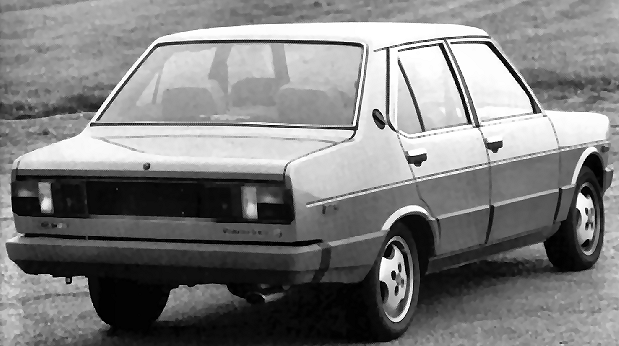
SFC
Gallery
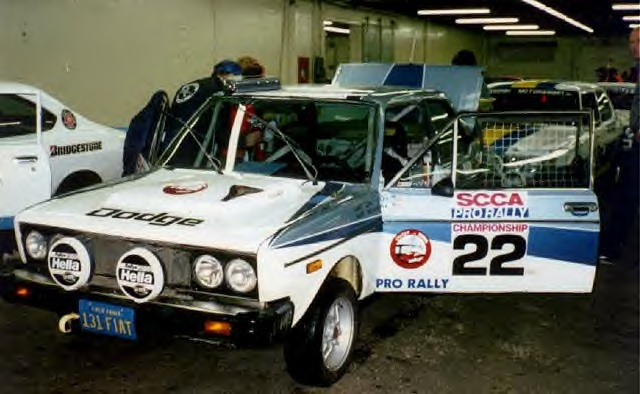
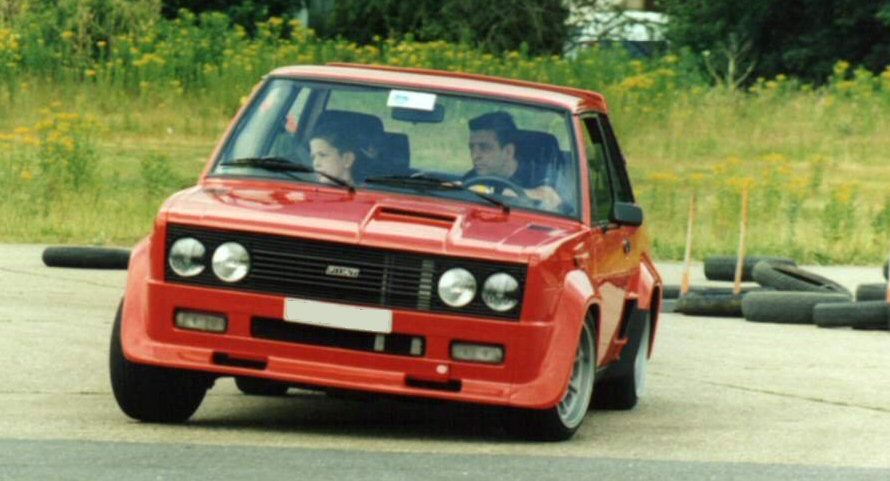
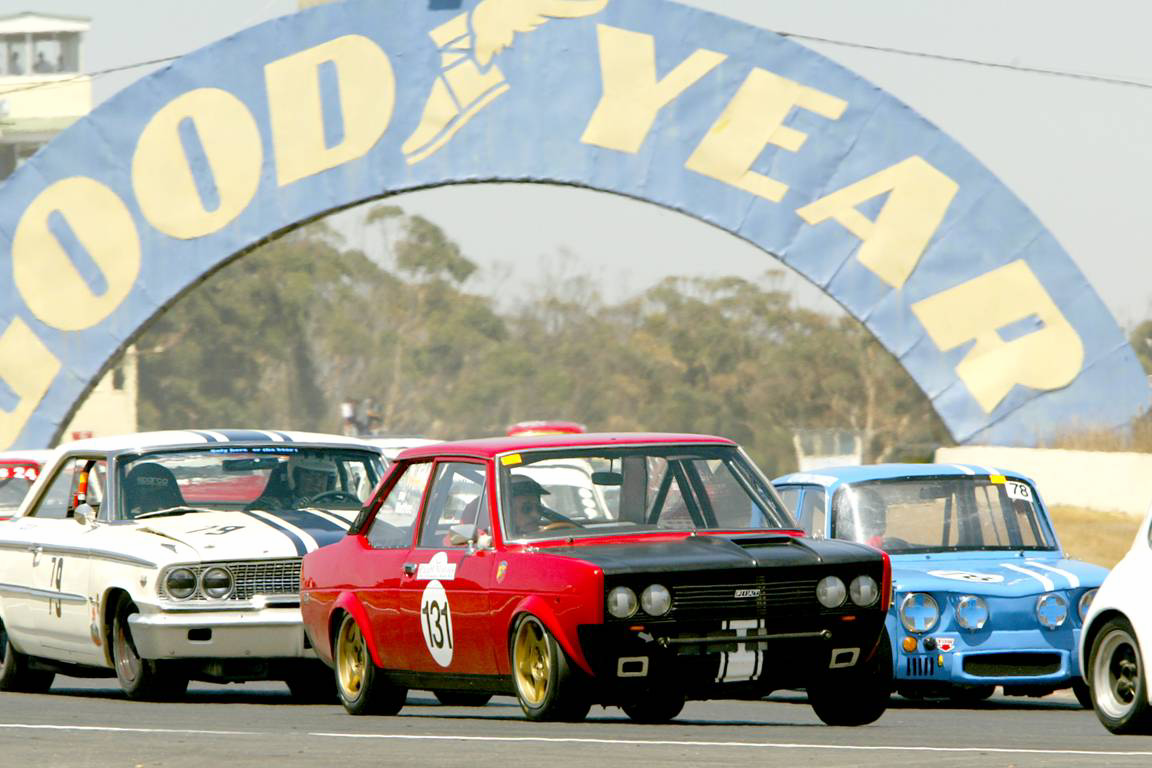
Rallies
in Brief
The World Rally Championship was only just being formed under the FIA.
It looks as though Lancia fully intended to run again in 1977 with the
Stratos and had driver teams ready.
Fiat was the only manufacturer to announce its intention to compete
in the 1977 WRC – which was for makes.
A separate drivers championship existed. Lancia along with several other
manufacturers entered drivers for the newly established FIA Cup for
Rally Drivers – the forerunner of the World Rally Drivers Championship.
This series involved a mix of WRC world rallies, European and National
rallies to provide a global spread of events – more extensive
than the Championship for Makes. In the latter, Fiat planned to compete
in all but one round - only excluding the Safari Rally from their campaign.
Ford entered championship too.
Fiat’s driver partnerships at the start were:
Markku Allen & Illka Kivimaki,
Fulvio Bacchelli & Francesco Rossetti
Maurizio Verini & Ninni Russo
Plus Simo Lampinen driving when he wasn’t involved with Lancia
or Saab.
Plus Makinen Salonen and Valtaharja in Finland
Walter Rohrl joined in Canada and Darniche & Mahe in the Fiat France
car.
Lancia’s drivers entered the FIA Cup for Rally Drivers
Sandro Munari stayed with his Stratos in the FIA Cup.
Simo Lampinen & Andreasson completed the team.
WRC rounds 1977 in Monte Carlo, Portugal, New
Zealand, Acropolis Greece, 1000 Lakes Finland, Criterium de Quebec Canada,
Safari, Sanremo, Tour de Corse Corsica, RAC Rally GB.
Fiat
wins the title.....
Monte
Carlo - 22nd/29th Jan - saw Fiat Group enter 45 cars for the 45th
Monte - after Alen was disqualified, and Bacchelli, Pinto, Darniche,
& Rohrl all retired the Rally was won by Munari & Maiga in their
Stratos. Jean Claude Andruet came second in a 131 Abarth (Fiat France).
Swedish
- 11th/23rd Feb - two 800km stages with 34 special trials. Won
by Stig Blomqvist's Saab, best 131 was Lampinen & Andreasson in
fourth.
Portuguese
- 1st/6th March - four stages 2,458km, and 46 special speed trials.
Won by Alen & Kivimali with Andruet 4th and Verini 5th. Ford's efforts
had been considerable too.
Safari
- 7th/11th April - No Fiat entry, Lancia Stratos Alitalias of Munari
& Sodano, Lampinen & Andreasson, plus Kenyans Ulyate & Street.
Mitsubishis and Peugeot 504s were fancied but the Ford of Waldegaard
and Datsun of Aaltonen & Derwes took top honours. Ford and Fiat
were llevel on 48 championship points, Opel on 39 and Lancia on 32pts.
South
Pacific (New Zealand) - 1st-7th May - mix of dirt/gravel, 'metal'
and tarmac stages. The Fiat v Ford fight had Alen, Bacchelli, &
Lampinen versus Vatanen, Marshall & Robson. bacchelli won with Alen
third and Lampinen fourth. Fiat two points ahead on 66 (to 64 Ford)
Acropolis
- 30thMay/2ndJune - Fiat entered 8 x 131 Abarths! and all major teams
were present. Fiats suspect diff casing caused three official entries
to retire Lampinen came fourth. Waldegaard, Clark (Fords) and Kallstrum
(Datsun) were on the podium. Ford led by 4 on 82 pts.
1000
Lakes - 26th/28th August - Only Alen's was officially there as
last year's 131 winner taken out by a sabotage boulder. Ford 100pts
Fiat 94.
Quebec
Criterion - 15th/19th September - 1500km with 543km of special
speed trials. Allen, Lampinen and Rohrl in 131s. Salonen, Lampinen and
Andreasson scored ahead of Clark. Ford 114 v Fiat 112.
San
Remo - 4th/8th October - heavy Fiat Group entry for their home
rally, but the French entry 131 of Andruet & Delferrier won with
Waldegard 5th. Fiat led again by six points.
Tour
de Corsa - 5th/6th November - Fiat & Lancia fielded 10 official
entries. Heavy attrition could not deflect from the Darniche & Mahe
win, with Pinto then Corello in the Stratos, Bacchelli and Vincent in
fifth to block any heavy points scoring by Ford. Fiat had 136 points
with Ford on 124 and Opel (64) and Lancia (60). Fiat were effectively
world champions.
RAC
- 20th/24th November - Three 131s officialy entered with two others
by the Autonovo Oy racing team (Makinen and Liddon) and one for Fiat
UK for Lampinen. Starting at Wembley and finishing at York with 3057km
and 69 special speed trials. All the major teams entered. Waldegard
snatched victory in the final stages. From Mikkola & Hertz (Toyota),
then Brooks Clarke and Dawson all driving Fords.
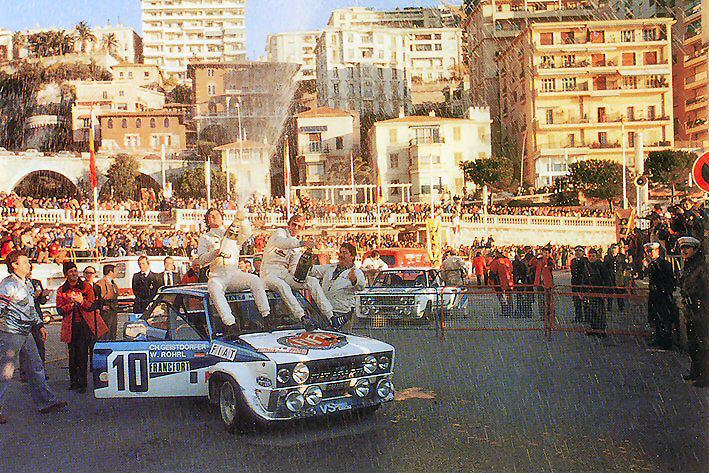
Monte
Carlo, Portugal, Acropolis Greece, 1000 Lakes Finland, Criterium de
Quebec Canada, Sanremo, Ivory Coast, Tour de Corse Corsica, RAC Rally
GB
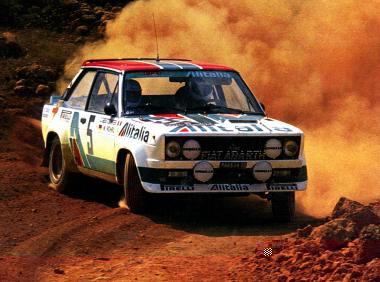
.
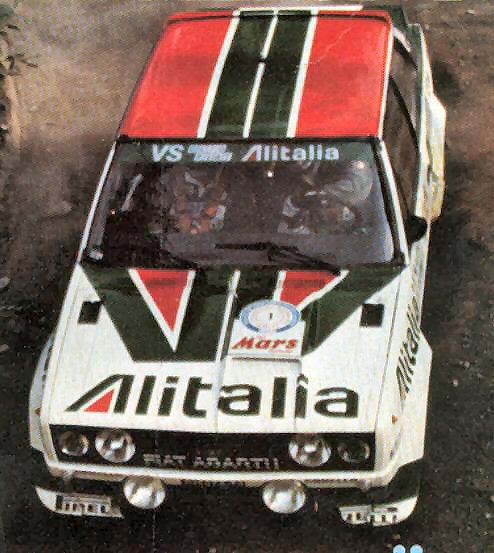
WRC rounds in 1980 Monte Carlo, Portugal, Safari, Acropolis Greece,
Codasur Argentina, Sanremo, Tour de Corse, Corsica, Ivory Coast, RAC
Rally GB.
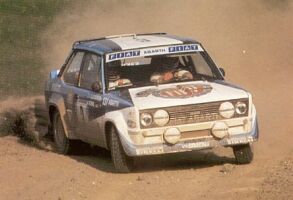
SFC
Questions
http://www.sfconline.org.uk/forum/topic.asp?TOPIC_ID=1626
Q
Due to a considerable amount of sun damage to the
fabric on the headrests and upper surfaces of my Abarth's interior I
am now on the look out for a replacement interior, front and rear seats.
I'd prefer the genuine original items, (with red stripes to match the
colour of my car!) but as these are going to be extremely difficult
to locate does anyone know of a good trimmer, or supplier of decent
period looking bucket/racing seats.
All (sensible) suggestions appreciated. Thanks, Simon.
A
http://www.bielstein.com/BF-Sitze/bf-sitze.html
On Perspex
and polycarbonate side windows.......... http://www.sfconline.org.uk/forum/topic.asp?TOPIC_ID=1746
On a project
tp build a replica works 131...........
http://www.sfconline.org.uk/forum/forum.asp?FORUM_ID=26
Page
Links
Parts
and Advice
Middle Barton Garage www.middlebartongarage.com
Tony Castle-Miller
.
Ricambio http://www.ricambio-web.fsnet.co.uk
158 High Street, Banstead, Surrey SM7 2NZ. 0208 642-8577 fax: +44 (0)1737-370091
.
Guy
Moerenhout
Gozzoli http://www.gozzoli.it
Via Claudia 211, 41053, Maranello MO, Italy. Tele/fax: +39 (0)536-941240
Vitto Elaborazioni http://www.vittoelaborazioni.com
Via Strada dei Frati, 12 36015 Schio Vicenza, Italy
Gruppo Ricambi BIELSTEIN OHG , D-31157 Sarstedt, Tel.: 0049 (0)5066
3074, Fax: 0049 (0)5066 65390 www.bielstein.com
e mail: bielstein@bielstein.com
Scorpione Abarth parts, Sleedoorn 10, 7873 CS Odoorn, Holland Tel: 0031
(0)591 513896 Fax: 0031 (0)591 513896
http://www.scorpioneabarthparts.nl
email: info@scorpioneabarthparts.nl
Rinaldi Tuning , NL-7553 DJ Hengelo, Tel./fax: 0031 (0)74 2425129
Scuderia Topolino Dutch and German based Abarth supplier - Paul van
Heyden http://www.scuderiatopolino.com/
Dichtungen-Schwarz Seals and Gaskets for the Abarths and similar classics
if the are listed|:
http://www.Dichtungen-Schwarz.de
General
Links
http://www.131abarth.com/
.
http://www.andreazoppini.it/
.
http://www.abarthfan.com/eng/index.html
.
http://www.abarth.ontheweb.nl/
.
http://www.thiel-tuning.de/
